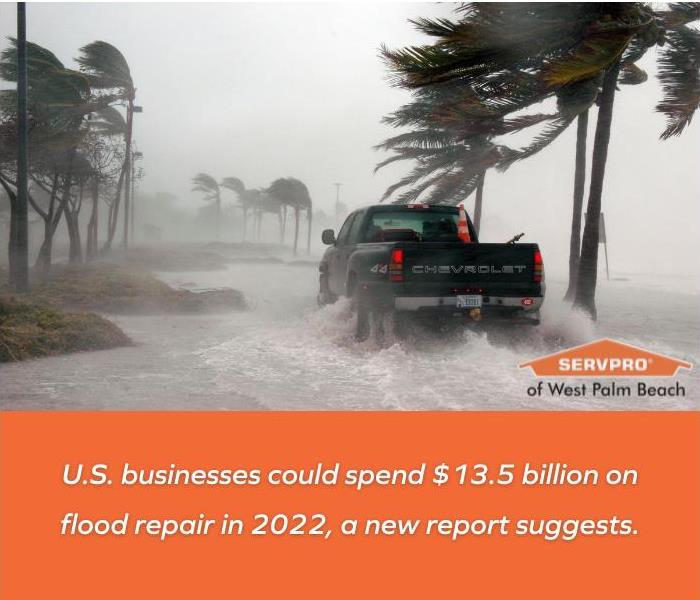What Flooding in 2022 Could Mean for South Florida Businesses
1/4/2022 (Permalink)
 Flood risk and insurance are changing this year. South Florida residents and commercial businesses are encouraged to review existing policies.
Flood risk and insurance are changing this year. South Florida residents and commercial businesses are encouraged to review existing policies.
Florida is a rapidly developing and changing coastal state. The South Florida region has growing flood complications each year. Florida sees more frequent tropical storm systems than any other state. The threat of extreme weather events and sea-level rise changes each year and requires consistent review by Floridians.
An organization called First Street Foundation and global engineering firm Arup published a recent report titled "The 4TH National Risk Assessment: Climbing Commercial Closures." According to the report, findings suggest that there are “currently 729,999 retail, office, and multi-unit residential properties at risk of annualized flood damage in the contiguous United States.”
Most Floridians understand that the risk of flooding brings with it lost days of operation, customer retention problems, and other unforeseen ramifications for commercial spaces. The report also mentions, though, that U.S. businesses could see spending around $13.5 billion nationally in 2022 on flood damage repairs and flood damage reconstruction.
With today’s changing landscape of hybrid and working-from-home business models, flooding to multi-unit residential buildings could also impact business operations. These considerations are becoming more centered now, as the insurance market and emergency management are changing how we look at flooding prevention in 2022 and beyond.
As flooding projections and risk ratings inflate, the insurance market is responding. The National Flood Insurance Program, offered by the Federal Emergency Management Agency (FEMA), has altered its rate structure. One implication of the Risk Rating 2.0 could be that commercial and residential properties are reclassified into a higher risk category. This change could create higher premiums on policies, possibly resulting in many policyholders transitioning to the private sector carriers later.
The susceptibility to flooding creates a need for more consistent maintenance and sophisticated planning for homeowners and property managers. A few general tips to navigate the changing Flood risk in South Florida should be incorporated into your yearly planning.
- Communicate with insurance agents to acquire a breakdown of how your commercial or residential property designation and coverage has been affected by FEMA’s changes in Risk Rating 2.0.
- Research and vet flood risk mitigation tactics for your property. This can protect property residents and business operations, and in some cases, reduce premium costs.
- Revisit commercial leases. Look for information on responsible parties and communicate rising premium costs with the leasing company.
- Continue to monitor local, state, and national government guidance on flood risk areas and activity.
- Update your business, building, or home’s emergency plan. Designate a restoration company with the capacity to handle 24/7 storm damage and flood damage services in Palm Beach County. SERVPRO of West Palm Beach provides service to commercial and residential buildings throughout the community.
Interactive flood zone mapping and other local flood guidance are available through the City of West Palm Beach website.

 24/7 Emergency Service
24/7 Emergency Service